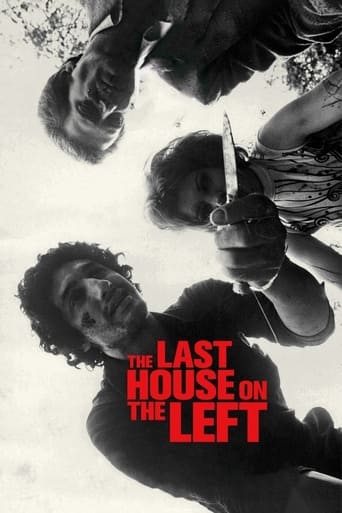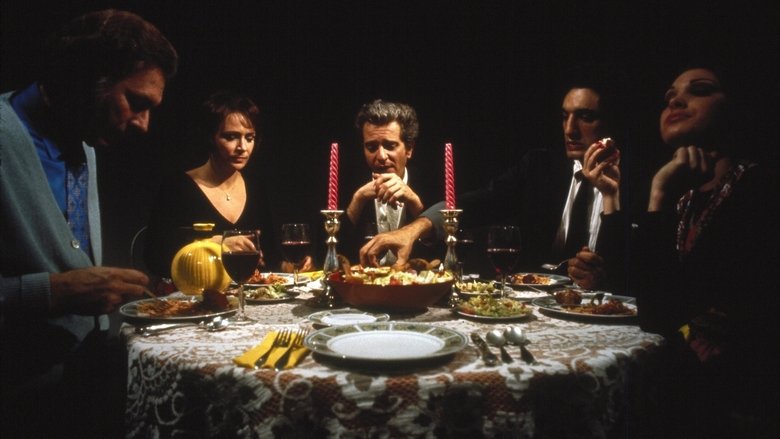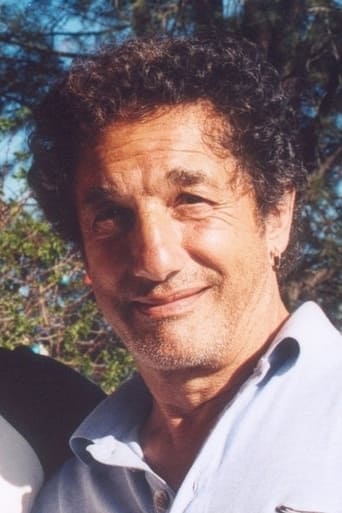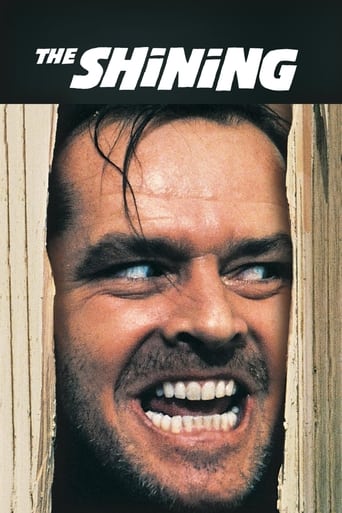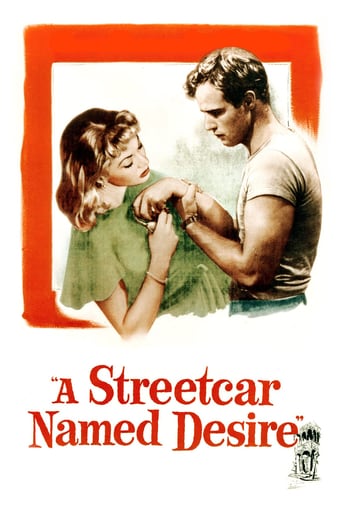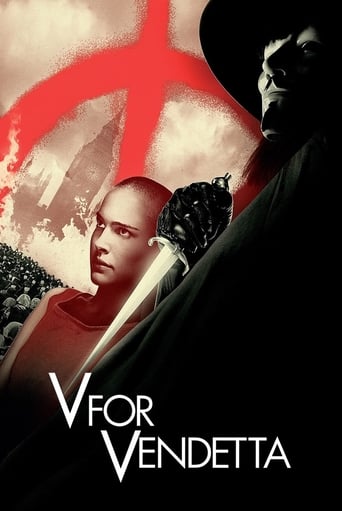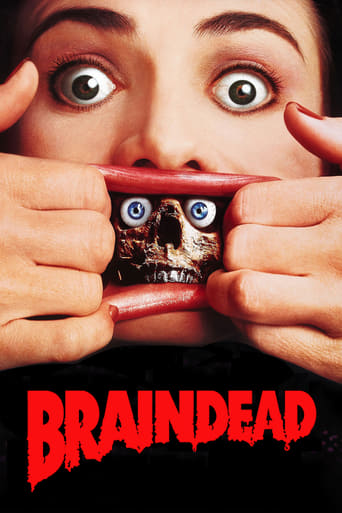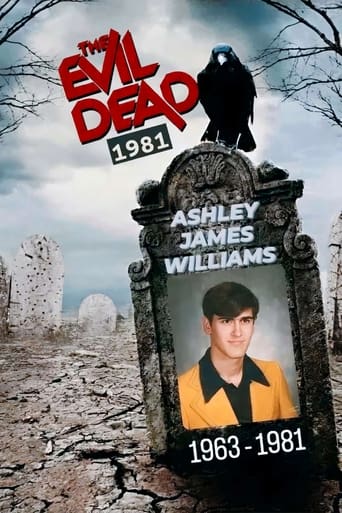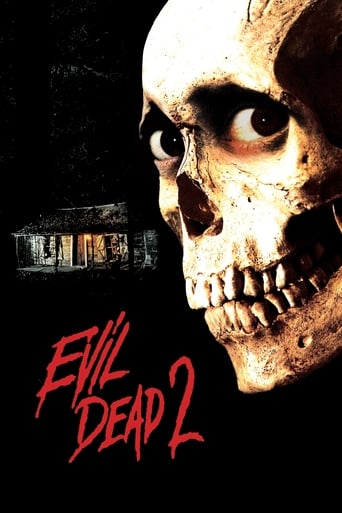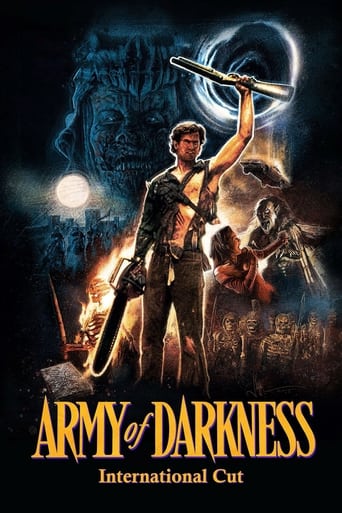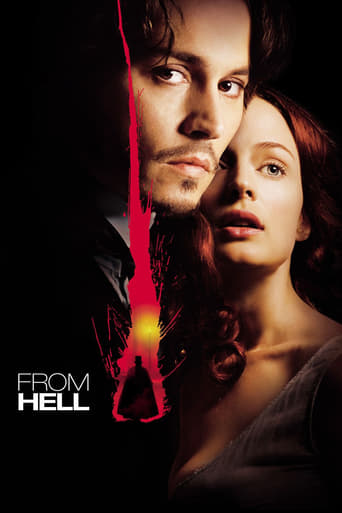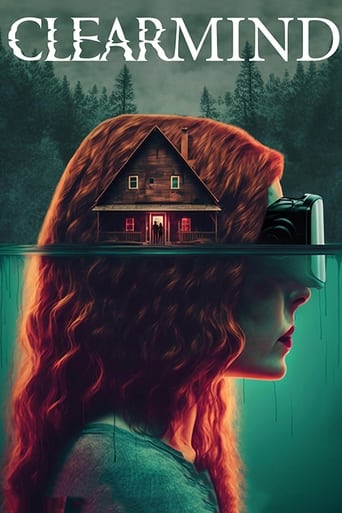The Last House on the Left (1972)
On the eve of her 17th birthday, Mari and friend Phyllis set off from her family home to attend a rock concert in the city. Attempting to score some drugs on the way, the pair run afoul of a group of vicious crooks, headed up by the sadistic Krug.
Watch Trailer
Cast


Similar titles
Reviews
To celebrate her seventeenth birthday Mari Collingwood plans to go to a concert in the city with her friend Phyllis Stone. On the way the radio reports that dangerous criminal, Krug Stillo, has escaped from jail along with his drug addict son, Junior; they are helped by psychotic Sadie and Fred "Weasel" Podowski. Before heading to the concert Mari and Phyllis decide to buy some cannabis; unfortunately the person they ask is Junior. Once they are in the flat with the criminals things soon get very bad. The next morning the two girls are drugged and bundled into the boot the thugs' car. They drive out into the country where, following a breakdown things get much worse. While this is going on Mari's parents are concerned that she is very late returning home so contact the police.This film may be over forty five years old but it still has the power to shock and disturb thanks to the fact that it feels quite real for the most part. The antagonists the sort of criminals we hear about on the news not supernatural fiends. The use of pleasant music and some ridiculously comic moments, usually involving two police officers, just serves to make the nasty bits seem even more disturbing. Once the girls are in the clutches of the criminals there is a constant sense of threat; sometimes the violence is physical and sometimes sexual. The film does rely on one very unlikely coincidence involving just where the criminals' car breaks down but that is needed for dramatic reasons. The final act, which relied on that coincidence, does go over the top somewhat but even this doesn't feel too out of place. The cast does an impressive job making their characters believable. Overall I'd say this is a must see for fans of classic horror films but it certainly won't be for everybody.
"The events you are about to witness are true. Names and locations have been changed to protect those individuals still living"Ha! Already the filmmakers have over done the comic elements.With the opening credits seemingly censoring the nudity in the opening scene, we're off to a really odd start, and it gets even weirder, in this early slasher about a mother and father taking brutal revenge on the group of thugs who killed their 17 years old daughter and her friend. Brutally horrifying, almost impossible to watch scenes of pedophilic, thieving killers Krug and Co. (one of this film's alternative titles) taunting, torturing the two girls, before killing them, are juxtaposed with the most inane, idiotic hillbilly banjo music, and super lame country hick humour. Mary's slow, hypnotic walk into the lake, resigned to her fate, as Krug takes aim, fires, the fatal shot piercing the silence and ringing in the air, is a genuinely terrifying moment, exactly what every horror film wants to achieve - immediately followed by a hillbilly jamboree, as the parents (unaware of the horrors committed) cheerfully plan their daughter's birthday party.Even after the crimes have been discovered, and the parents are exacting their revenge, the hillbilly banjo music and local yokel cops seem to commandeer every other scene. Between that, and the theme song, I wonder if this was originally two separate films, edited together by someone who hadn't watched either cut?Even the theme song itself (written by Krug himself, David Hess) seems to be begun by one writer with one tone in mind, but completed by someone else who hadn't listened to its beginning: "And the road leads to nowhere" All right, that is appropriately dismal and bleak, but the next lyric: "And the castle stays the same" What? What castle? "And the father tells the mother, wait for the rain" So, in the midst of all this horror, there is still room for the weather report.I can't honestly rate this from 1 to 10, nor can I recommend it, but if you have a strong stomach for things like this, maybe give it a go, just be prepared for some unbearably tense moments, and jarring changes in tone.I watched an old Vestron VHS tape of this, getting another early start on my 31 days of Halloween, and the tape includes a post-credits text: "Coming soon to a theatre near you. From the producers of Last House On The Left, and the director of Friday the 13th Part V, ... The Last House On The Left, Part II. You won't believe your eyes!" Apparently, due to an injury Friday the 13th part V's director suffered, the sequel never happened.
Wes Craven's first film is without a doubt one of the most brutal, intense and shocking movies you'll ever see. Before our eyes a catalogue of atrocities are carried out through the grainy eye of the unblinking camera. To make matters worse, Craven makes us get to know and care about the characters before the violence begins, which of course makes the eventual bloodshed all the more worse. Indeed this film made me queasy while watching, and it's not an easy film to sit through. It might be a good film, yes, but its definitely not enjoyable. Would you want to watch it again? I don't think so.The film's low budget merely adds to the overall gritty feel of it. The only thing out of place is the inappropriate cheerful music which keeps popping up all of the time, we could have done without this. All characters are three-dimensional and understandable, even the psychopaths. Yes, they're psychopaths, but these people could be real, such things really do happen in real life. David Hess went on to carve himself a niche in these type of roles, as to portray a cold-blooded sadist was something he did with frightening realism. Cassel and Grantham are likable and heart-breaking as the subjects of the violent attacks, scenes hard to watch. Everybody in this film puts their heart into it.Craven even experiments with manipulation of the viewer, in the final scenes getting us to cheer on a chainsaw murderer. The film questions violence and the primitive way in which it is a part of human nature. I wouldn't really recommend this film, see it if you have to. One viewing is way more than enough though.
During the early 70's, exploitation films began to run the gamut of seedy, dilapidated theaters that were sprawled throughout cities. Featuring an extremely low budget, exploitation films captured an essence of the culture, one that began to emerge after the death of the late 60's summer of love. When The Last House on the Left was introduced to the public, it was advertised with the tagline "to avoid fainting, keep repeating it's only a movie it's only a movie." What Wes Craven presents to the audience with his first feature length film is a tacky, ultra-violent, and ultimately unnecessary foray into exploitation cinema, yet one that is sickeningly satisfying, helping change the face of cinema forever.Quickly establishing itself as a film with little morals, but with the potential for values, The Last House on the Left opens with the loving and caring family of the Collingwoods, whose house rests with woods on each side. On the eve of their daughter Mari's (Sandra Cassel) 17th birthday, her parents agree to let her attend a concert in the city with her friend Phyllis (Lucy Graham). Attempting to score some weed after the show, Phyllis encounters Junior (Marc Sheffler), the son of newly escaped convict Krug (David Hess), who has holed up in an apartment building along with fellow fugitives Sadie (Jeramie Rain) and Fred "Weasel" Podowski (Fred Lincoln). What follows is exactly what the films tagline wants you to begin repeating to yourself, "it's only a movie it's only a movie." Produced by Sean S. Cunningham, who would later direct one of the most quintessential slasher films of our time with Friday the 13th, The Last House on the Left is filmed with the exact low budget graininess that other exploitation films of its time are. One defining difference Wes Craven gives it is an immense sense of well being, established by the blossoming friendship of Mari and Phyllis. While I've certainly never discussed my newly developed testicles or how my body has really filled out over the past season with anyone, watching it being discussed by the two establishes innocence, one that only a woman and possibly her parents could truly feel. This innocence, aided by the loving care of Mr. and Mrs. Collingwood builds us up for the inevitable drop that comes with the young women encountering the gang of fugitives.What Wes Craven seems to labor too intensively on amidst the rape, torture, and ultra-violence is the supposed necessity to lighten the mood whenever the camera shifts away from the perversion in the woods. Given the seriousness and gravity of what is laid out in front of us, the film becomes less exploitative than it does tacky with the goofy, Three Stooge like behavior of the bumbling law men, played by Marshall Anker and Martin Kove. Mixed between cuts of oral rape, dismemberment, and shootings is a score, with pieces provided by David Hess himself, that detaches us from what has burrowed deep within our core, coming off like a B.J. Thomas mock.While remaining unnecessary with its representation of violence towards women, its poorly timed comedic cuts, and its misguided musical choice, The Last House on the Left has remained as significant as it did when it first hit low budget cinema in 1972. It's ability to stick with you long after the credits have rolled is a true testament to the strength and passion of its creators, playing as a true labor of love rather than a simple shock piece. What Wes Craven and Sean S. Cunningham have provided stands not only as a staple in exploitation cinema, but as a milestone in horror, paving the way for years of gore, screams, and macabre.

